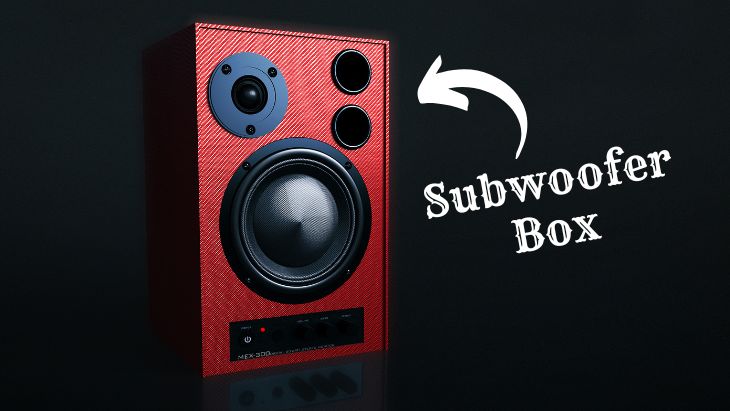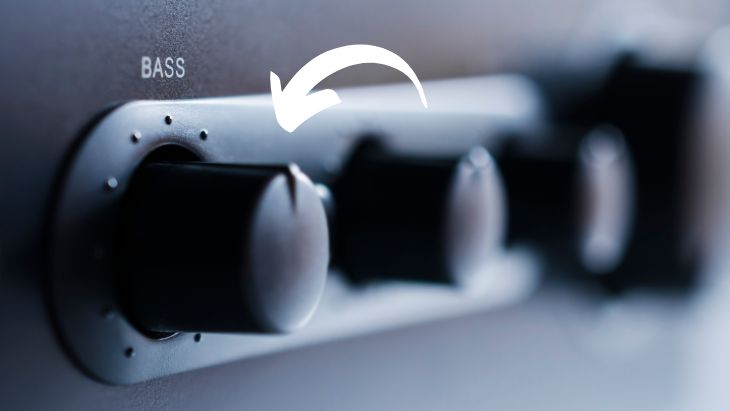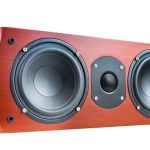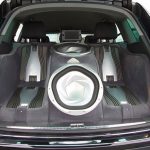If your sound system is not delivering the kind of bass you want, then you probably need to add a subwoofer. If you already have a subwoofer but it’s not sounding right, then you need to set it up properly. Subwoofers are a special type of speaker designed to reproduce bass. However, you can still add a subwoofer and fail to get the kind of bass performance you expected. So what can you do to make your subwoofer sound right? There’re certain things you should do for your subwoofer to sound right. Here’s how to get the best performance out of your subwoofer.
Add a Subwoofer Box

If you’ve just bought a passive subwoofer and it came without an enclosure, then you won’t get tight and deep bass. A subwoofer performs best when enclosed in a subwoofer box. Thus, you can enhance the performance of your subwoofer by adding a subwoofer box. Subwoofer boxes are either sealed or ported. The choice you’ll make should depend on the kind of bass you want. For instance, if you want tight bass, then a sealed sub-box will be your best bet. If you want louder bass, then a ported box will be better.
Sealed sub boxes are also ideal where space is limited. Sealed boxes don’t have to be too large for great performance. Thus, they’re space-saving. However, they demand more power to overcome the air pressure within the sealed space. Sealed boxes sound best with jazz and classical music. On the other hand, ported sub boxes are generally larger such that they are only ideal for use where space is not an issue. Ported boxes sound best with hip-hop, rap, rock, and electronic dance music.
If you want all-around performance from your subwoofer, you can go for bandpass subwoofer boxes. These boxes are a combination of sealed and ported boxes built into one box. Thus, they offer the advantages of both sealed and ported boxes. Thus, you can get the best all-around subwoofer performance from a bandpass subwoofer box.
You can choose to buy a pre-made subwoofer box or build your own. If you’re building your own sub-box, add acoustic foam material around the interior walls to absorb reflections and reduce the standing waves. This way, there will be reduced distortion and enhanced bass response. Also, if the premade sub-box doesn’t have acoustic foam material, make sure you add some for enhanced subwoofer performance.
Extend the Heat Sink
Heat is the leading enemy of sound equipment. Active subwoofers come with an inbuilt amplifier. The amplifier emits a lot of heat while boosting the sound signals to power the sub-driver. If the subwoofer is used heavily for a prolonged period, the amp may overheat if it’s not cooling properly. This will impact negatively the performance of the amp and subwoofer. Thus, amplifiers come with a heat sink to dissipate heat away from the amp.
You can get the best performance out of your subwoofer by extending the heat sink on the amp. This is especially important if you’ll be using the subwoofer heavily and for a prolonged period. Check the free space in the subwoofer box and whether it’s possible to add a larger heat sink. If possible, get an aluminum plate that can fit in the available space. Apply heat sink compound on the surface of the existing heat sink that will come in contact with the surface of the extension heat sink. The heat sink compound should also be applied on the extension heat sink surface that will come into contact with the existing heat sink. Then glue the extension heat sink onto the existing heat sink with super glue. This will increase the surface area of the heat sink to dissipate more heat and allow the amp to remain cooler for enhanced subwoofer performance.
Add an Amplifier
Subwoofers demand a lot of power to reproduce low frequencies. Thus, the kind of power you’ll feed the subwoofer will determine its performance. Under-powering a subwoofer makes it distorted. Excessive distortion can damage the subwoofer coil. Adding an amplifier will make the subwoofer deliver louder and deeper bass with enhanced quality. For instance, an amplifier will enhance the performance of your subwoofer by improving the sound signals from the source without straining the subwoofer. However, avoid overpowering the subwoofer as it can burn out. The RMS rating of the amplifier should match the subwoofer’s power handling rating.
Proper Subwoofer Placement
A subwoofer will sound better in certain listening positions than others, especially when setting up the subwoofer in a room. First, try placing the sub between two satellite speakers. Ensure the subwoofer is several inches away from a wall and not in a corner. You can also try placing the sub on the side wall and assess whether it sounds right. If these positions don’t work, try a technique known as crawling for bass. In this technique, you’ll move your sub around the room while listening. Your ears will definitely tell the best position. While doing so, play some music that has heavy bass to allow you to assess the bass response in detail.
Tune the Subwoofer Properly
Upon finding the best listening position for your subwoofer, you can get the best performance out of your subwoofer by tuning it properly. Tuning the sub is necessary to reduce distortion and flatten the bass response. Here’s how to go about it:
Eliminate distortion
If the subwoofer is not tuned properly, you’ll hear distortion noises such as hissing and crackling noises. Distortion reduces the performance of a subwoofer. Thus, you need to get rid of it. To do this, first set the amplifier gain setting to low. Then play some music and adjust the volume of the receiver upward until the subwoofer starts to distort. Once you notice some distortion, reduce the volume until you get clean bass. Note down this volume level. This is the maximum volume level that the receiver can drive the subwoofer with the cleanest bass.
Next, turn up the amplifier gain gradually until you hear some distortion from the subwoofer. Then reduce the amplifier gain until the distortion clears. Note this amp gain level as the highest gain level at which the subwoofer can perform best.
Adjusting subwoofer gain and crossover
You’ll also need to adjust your sub gain and low-pass filter appropriately for the best subwoofer performance. To adjust the gain, play some music and set the receiver volume to a quarter. Turn the subwoofer gain level until you feel it’s overpowering the satellite speakers without distortion. Next, adjust the low-pass filter of the subwoofer downward until the high frequencies and mid frequencies are no longer noticeable. The low-pass filter works by eliminating the frequencies you wouldn’t want the sub to reproduce. This way, you’ll get cleaner bass.
Adjusting the bass boost

If your subwoofer has bass boot functionality, you can turn it up gradually for more kicking bass effects, especially when hitting bass drum notes. However, be careful when using the bass boost as overusing it can introduce a lot of distortion into the subwoofer. In case of any distortion when adjusting the bass boost, lower the gain level of the subwoofer until the distortion is reduced.
Adjusting the subsonic filter
If you’re using a subwoofer with a ported enclosure, take advantage of the amplifier subsonic filter to eliminate resonant frequencies. Fine-tune the filters until the bass sounds tighter as per your personal preferences. The goal here is to adjust the subsonic filter until you hear that it’s sounding right.
When tuning your receiver and subwoofer, avoid using the bass boost, gain, and low-pass filters of the subwoofer and receiver at the same time. Adjust them from only one of the equipment and not both. Adjusting the levels on both types of equipment will generate phase distortion, thereby making the subwoofer sound muddy.
In Conclusion
When trying to get the best performance out of your subwoofer, what matters most is how the subwoofer will sound best to your ears. Ensure the bass sounds properly integrated with other frequencies. Also, tune up the system until the bass sounds uniform with other speakers. If tuning up the subwoofer manually appears very challenging, take advantage of the auto-setup options that come with the receiver.
Michael Evanchuk is a San Francisco-based sound engineer with 20 years’ experience installing, troubleshooting, and repairing commercial, automotive, and household sound equipment. Evanchuk owns an auto stereo center, where he offers highly competitive car audio installation and repair services. He has written dozens of articles on different sound engineering topics, all of which have been published in leading journals, blogs, and websites.





